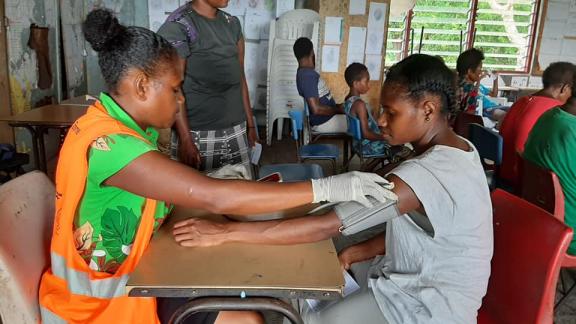Cervical cancer is the fourth most common cancer among women globally. About 90% of the 342,000 deaths caused by cervical cancer occurred in low- and middle-income countries. The highest rates of cervical cancer incidence and mortality are in sub-Saharan Africa, Central America, and South-East Asia. Regional differences in the cervical cancer burden are related to inequalities in access to vaccination, screening, and treatment services.
Human papillomavirus (HPV) is the primary cause of cervical cancer. HPV is mainly transmitted through unprotected sexual contact, including skin-to-skin genital contact. Most HPV infections are self-limiting and can be cleared by the immune system. However, if the infection persists, it may lead to precancerous cervical lesions or even cervical cancer. For individuals with weakened immune systems, such as those with poorly controlled HIV infection, the risk of developing cervical cancer is significantly higher.
A comprehensive report on the progress of cervical cancer elimination in the region, released by the Asia-Pacific Economic Cooperation (APEC) Health Working Group, reveals that APEC economies account for approximately 38% of new cases and 35% of global deaths. Data from the report indicate that most APEC economies are furthest along in meeting targets for cervical cancer treatment.
The report builds on the 2021 roadmap, which sets policy targets for member economies to bolster health capacity and enable women and girls to lead healthy and productive lives. While a majority of the countries have adopted strategies for the elimination of cervical cancer, ranging from comprehensive programs to specific interventions within broader cancer strategies, there are still notable gaps in implementation. This recognises the need for multistakeholder collaborations, in line with the World Health Organization’s global strategy for cancer elimination.
Contributing towards eliminating cervical cancer is a core part of IPPF’s mandate. IPPF adopted a Cervical Cancer Strategy 2020–2024 to ensure women, girls, and affected populations can access cervical cancer information and services, strengthen health equity, address stigma, and challenge harmful social/gender norms that create barriers to accessing timely and high-quality services.
Our Member Associations in the ESEAOR region are dedicated to preventing, treating, and eliminating cervical cancer. Here, we highlight the incredible work of some of our Member Associations:















